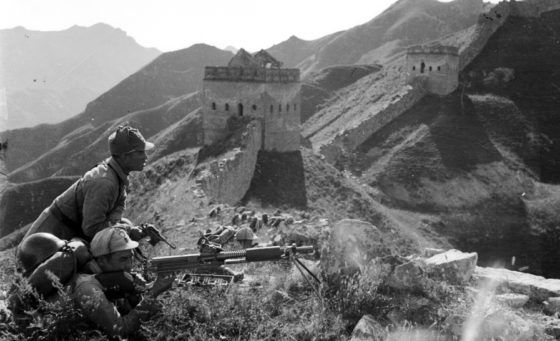
“The British army in the First World War actually promoted a donkey to the rank of Sergeant.”
FOR THE FIRST 180 years of its existence as a sovereign nation, the United States supposedly never lost a conflict. Then in 1956, the American military stopped using mules. Since then, the U.S. began losing wars. So goes a curious column published last week by the Arab news service Al Arabiya.
Although dubiously argued and laced with denunciations of both the U.S. and Israel, the column (possibly a joke?) by Jihad El-Khazen does provide some fascinating, if not amusing bytes on the lowly mule’s contributions to American arms.
But America isn’t the only military power to send mules and donkeys into battle.
During the recent war in Iraq, insurgents on at least one occasion in 2003 used improvised donkey-mounted rocket launchers to attack American and coalition troops. A number of countries have even formally recognized the efforts of particularly heroic pack animals. Consider these:
The British army in the First World War actually promoted a donkey to the rank of Sergeant.
Jimmy the Donkey was born in the trenches at the Somme, when a Germany shell fatally wounded his pregnant mother. British soldiers were forced to deliver Jimmy in the mud of the battlefield. The baby donkey was raised by the troops of the Cameronian Scottish Rifles who fed him condensed milk and rations. They even taught the animal to salute by raising one hoof. Jimmy would spend the next two years with the regiment, hauling supplies and keeping his human comrades’ spirits up. It’s this latter function that earned him his stripes.
He was wounded three times before the end of the war, but went on to become a mascot of the Royal Society for the Prevention of Cruelty to Animals in the 20s and 30s. He died in 1943 and was buried in Peterborough’s Central Park. A monument was erected to commemorate him. Most recently, Jimmy was honoured with an exhibit at a military museum in Hamilton. The story was reported recently in the British newspaper the Daily Mail.
The British weren’t the only ones to celebrate the exploits of a donkey in the First World War.
Duffy the donkey and his ANZAC master Pvt. John “Murphy” Simpson Kirkpatrick of the 3rd Field Ambulance, Australian Army Medical Corps became legends at the battle of Gallipoli.
For nearly four weeks in the Spring of 1915, the two hauled wounded soldiers from the trenches and no man’s land down to the Dardanelles beachhead.
According to the legend, Simpson, a donkey handler before the war, along with Duffy the donkey transported up to 300 injured soldiers before being killed by Turkish machine gun fire.
Following the abortive campaign, news of Simpson and Duffy’s exploits were celebrated in Australia. A 1916 Australian film entitled Murphy of Anzac. In 2011, the government of Australia launched an investigation to determine if Simpson should be honoured with a Victoria Cross. A statue of Murphy and Duffy commemorate the duo in Australia.









